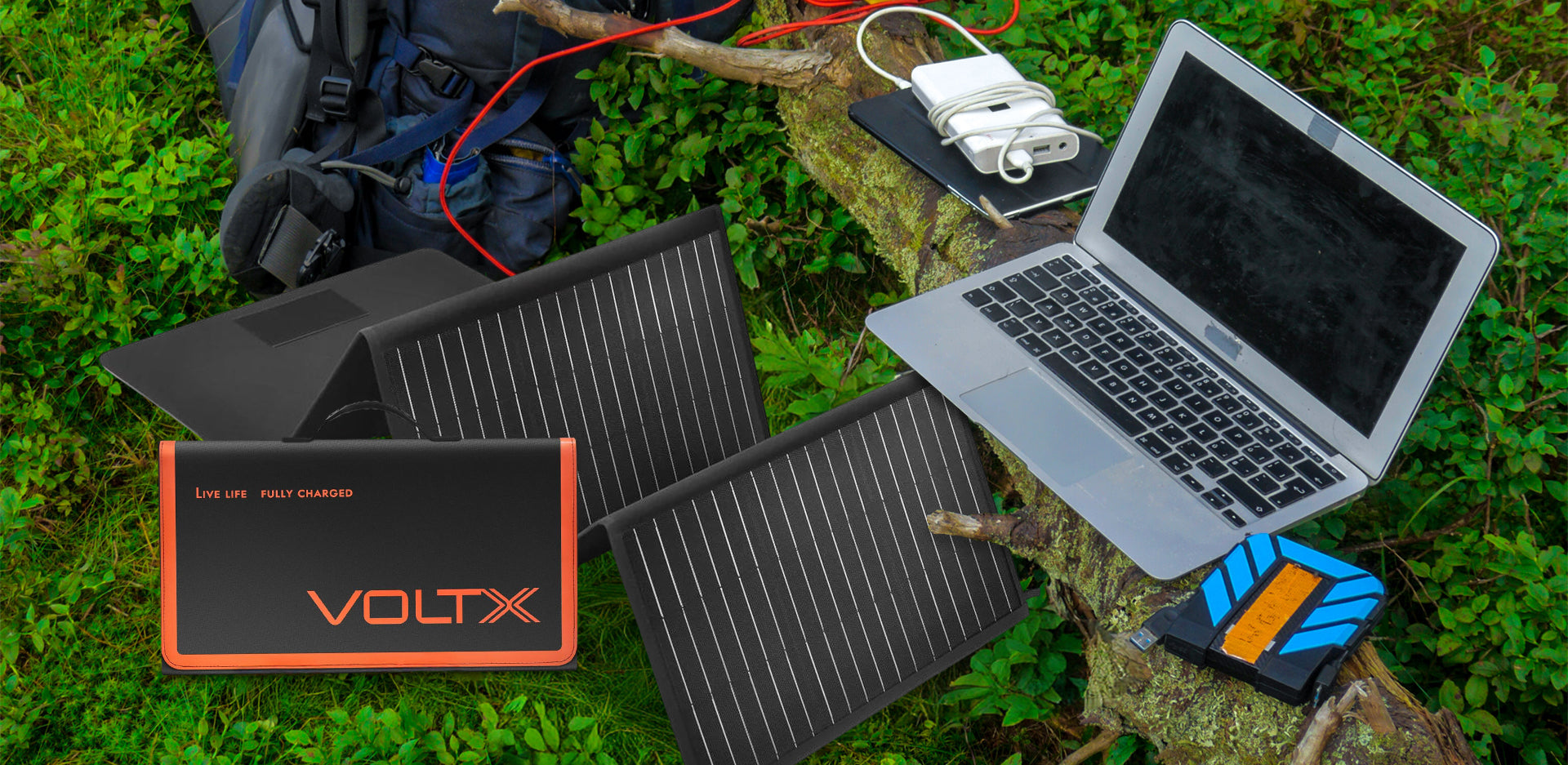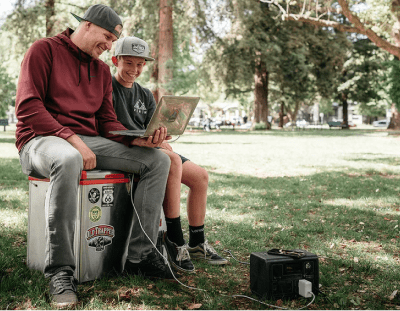Over 70% of Australians participated in outdoor recreation activities last year, with many seeking ways to stay connected while embracing off-grid freedom. Lightweight solar panels have emerged as the modern solution for outdoor enthusiasts who need reliable portable solar power without the noise, weight, or fuel requirements of traditional generators. Whether you're planning a weekend camping trip, embarking on the great lap in your caravan, or setting up camp in remote locations, portable solar technology offers endless energy independence directly from the sun.
This comprehensive guide will walk you through selecting, using, and maximising the benefits of solar power for your specific outdoor adventures, from hiking and 4WD expeditions to van life and boating. The eco-friendly nature of solar power means you can explore pristine wilderness areas while maintaining a minimal environmental footprint, all while keeping your essential devices charged and ready.
Understanding Your Portable Power Options
The world of lightweight solar panels offers diverse options, each designed to meet specific outdoor power needs and adventure styles. Foldable solar panels, often called solar blankets, represent the pinnacle of portability with their lightweight construction and compact storage capabilities, making them ideal for backpackers and campers who need to maximise pack space. Models like the Outbax 200W folding solar panel exemplify this category's perfect balance of power and portability. Rigid briefcase-style panels offer superior durability and typically higher efficiency rates, making them excellent choices for car camping, caravans, and established base camps where weight is less critical than performance.
Here’s what one of our customers said:
"Got this on deal with the VoltX battery box. Awesome solar mat, very high quality and neatly packaged. Comes with all the leads you could need. Highly recommended if you truly want to be power self-sufficient when camping."
Flexible roll-up panels provide unmatched versatility, conforming to curved surfaces like boat decks or 4WD roofs while remaining remarkably lightweight. The key to these panels' travel-friendly nature lies in advanced materials like ETFE coating rather than traditional glass, combined with frameless designs that dramatically reduce weight without sacrificing weather resistance or efficiency. Monocrystalline cell technology further enhances performance, ensuring maximum power generation even from small solar panels designed for ultimate portability.
How to Choose the Best Lightweight Solar Charger
Selecting the ideal lightweight solar panels for camping or other adventures requires careful consideration of your specific power requirements and usage scenarios. Power output, measured in watts, determines what devices you can realistically charge. For example, a 100W panel suffices for phones and tablets, while a 200W or 250W system can handle portable fridges and multiple devices simultaneously. Weight versus power represents a crucial trade-off; backpackers should prioritise ultra-light options under 5kg, while caravanners can accommodate more powerful 10-15kg units that deliver substantial energy. Durability and weatherproofing prove essential for outdoor use, with IP65 or higher ratings and ETFE coatings ensuring your investment withstands rain, dust, and intense Australian sun.
Connectivity options including USB, USB-C, DC, and MC4 ports must align with your devices—pairing panels with a quality power station like the VoltX E600 creates a complete off-grid power solution. While cheap solar panels might seem attractive, investing in quality ensures reliable performance when you need it most; understanding what to know before buying a portable solar panel saves frustration and replacement costs down the track. For those wondering what a 100 watt portable solar panel can power, expect to charge smartphones 10-12 times, run LED lights for days, or operate a small fan continuously under optimal conditions.
Getting Maximum Power From Your Panel: A Simple Guide
Maximising your portable solar charger efficiency requires understanding fundamental positioning principles that significantly impact power output. Positioning your panel directly towards the sun, much like positioning yourself for an even tan, ensures maximum sun exposure and optimal energy collection throughout the day. The correct panel tilt varies by latitude and season, but a general rule suggests matching your location's latitude angle—adjusting this angle as the sun moves across the sky can increase output by up to 40%. Even partial shading from trees, buildings, or equipment can reduce panel efficiency by 50-75%, making clear, unobstructed placement essential for optimal performance.
Regular cleaning with a soft cloth and water removes dust, bird droppings, and debris that accumulate during outdoor adventures, maintaining peak efficiency especially important in dusty outback conditions. Understanding how weather affects output helps set realistic expectations, too. While panels still generate power on cloudy days, expect 10-25% of rated capacity compared to bright sunshine. Factors affecting solar panel output in the field include temperature (panels work better in cool, sunny conditions), altitude (higher elevations receive more intense sunlight), and atmospheric conditions like humidity and pollution.
Powering Common Adventures Off The Grid
Weekend campers and hikers benefit from compact 50-100W panels that easily charge phones, GPS devices, headlamps, and cameras while adding minimal weight to their pack. Van life enthusiasts and caravan adventurers require more substantial systems; van solar panels rated at 200-300W paired with lithium batteries like the VoltX 12V 100Ah create comprehensive power solutions for running portable fridges, fans, lighting, and laptops throughout extended journeys. Boating and marine explorers need specially designed marine solar panels with enhanced water resistance and corrosion protection to withstand salt spray while powering navigation equipment, radios, and onboard amenities.
For those travelling the great lap or living the grey nomad lifestyle, car solar panels mounted on roof racks provide continuous charging while driving, supplementing campsite setups for complete energy independence. Emergency preparedness represents another crucial application; having portable solar panels for RV or home backup ensures critical devices remain operational during power outages or natural disasters. Outbax offers comprehensive solutions across all these categories, with boat solar panels featuring robust construction and efficient power delivery even in challenging marine environments.
Final Thoughts on Portable Solar Power
Embracing lightweight solar panels transforms outdoor adventures by providing silent, clean energy that enhances rather than compromises your connection with nature. The initial investment in quality solar equipment from trusted suppliers like Outbax delivers endless free energy from the sun, eliminating ongoing fuel costs while reducing your environmental impact. Energy independence means never worrying about finding powered campsites or carrying spare batteries, allowing you to explore further and stay longer in pristine locations. The sustainability aspect resonates deeply with outdoor enthusiasts who value preserving the natural environments they love to explore. Your next powered-up adventure awaits, whether it's a remote beach camp, mountain expedition, or cross-country road trip—with portable solar power ensuring your devices, lights, and essential equipment remain operational throughout your journey.


